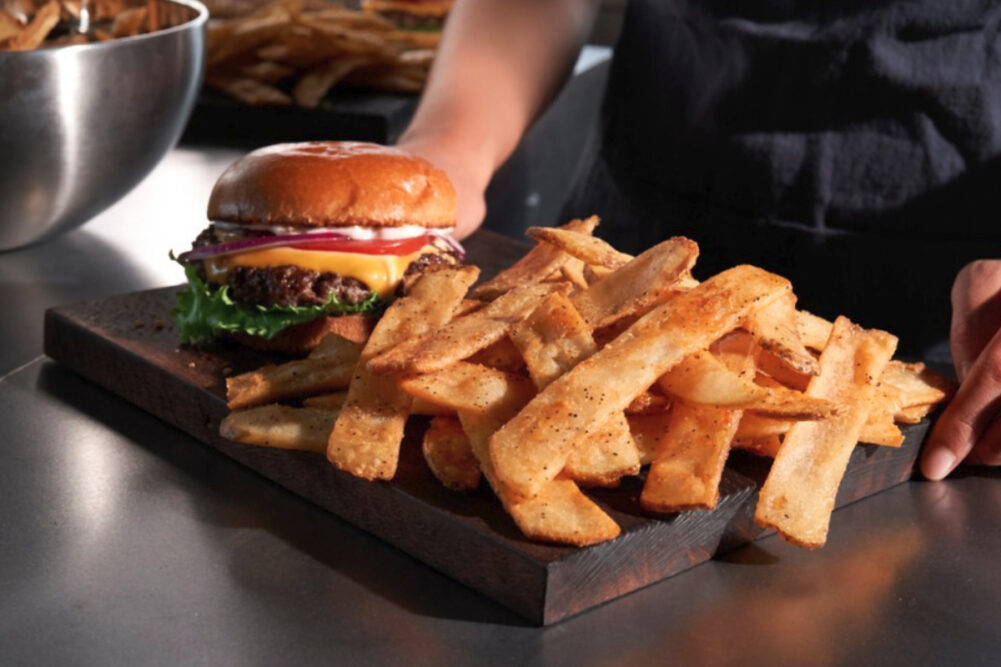EAGLE, IDAHO – Stability is returning to some segments of the foodservice category, according to executives with Lamb Weston Holdings, Inc. Much uncertainty remains, but management expressed optimism about the trends they are seeing at quick-service restaurants (QSRs) as the company has transitioned from the first quarter of fiscal 2021 to the second quarter.
Demand trends following the end of the first quarter Aug. 30 have been promising, according to the company.
“Weekly shipments to our large QSR and full-service chain restaurant customers in the US are trending at around 95% of prior year levels,” said Robert M. McNutt, chief financial officer, during an Oct. 7 conference call to discuss first-quarter results. “While QSRs are likely to be largely unaffected, we anticipate that shipments to full-service restaurants could take a step back as outdoor dining options become more limited with the onset of colder weather.
“In our Foodservice segment, weekly shipments to our full-service restaurants, regional and small QSRs and noncommercial customers in aggregate are trending at approximately 80% of prior year levels. Shipments to full-service restaurants and small and regional QSRs have been trending above that rate but could soften due to cold weather. Shipments to noncommercial customers have been trending well below that rate and are likely to remain so until spread of COVID is broadly contained.”
Adding to the optimism is interest from some larger QSR customers in innovation and the introduction of limited-time offers (LTOs) in the future. This is significant for the company since sales to the top 100 North America-based QSRs and full service restaurant chains as well of its international sales comprise its Global business unit, its largest in terms of sales.
“There was a period where a lot of customers of all different sizes were focused on menu simplification based on the environment that unfolded in the last six months,” said Thomas P. Werner, president and chief executive officer. “And I think now that there's a return of demand, the mindset with some of our customers is share of occasion. So, that's leading toward renewed discussions on LTO activity and what that could look like for some of our customers.
“Every customer is different. Some of them are more aggressive on menu items than others. And the thing to remember is once those discussions start, it does take some time to get them in the marketplace and on menu.”
Net income for the first quarter was $89 million, equal to 61¢ per share on the common stock, and a decline when compared with the first quarter of fiscal 2020 when the company earned $116 million, or 79¢ per share.
Quarterly sales fell 12% to $872 million.
“We believe that we weathered the worst of the pandemic effect on our operations during the fourth quarter of fiscal 2020,” Mr. McNutt said. “Demand across most restaurant sectors has improved from the lows of Q4, providing a backdrop for us to deliver a 3% sequential sales growth in our first quarter.
“Sales volume was down 14% as frozen potato demand outside the home continues to be affected by government-imposed restrictions on restaurant traffic and other foodservice operations.”
Global business unit sales fell 14% to $448 million. Lamb Weston’s Foodservice unit, which includes North American foodservice distributors and restaurant chains outside the top 100 experienced a sales decline of 22% to $237 million. Unit volume declined 28%.
“Price/mix increased 6% behind the carryover benefit of pricing actions taken in the latter half of fiscal '20,” Mr. Werner said. “Mix was unfavorable for two reasons. First, independent restaurants, which purchased a high amount of Lamb Weston branded products, have been disproportionately impacted by the pandemic. And second, some customers have traded down to more value-oriented products in order to reduce costs.”
A bright spot for the company during the quarter was its Retail business unit, which had a sales increase of 19% to $154 million. Volume increased 11%.
“Volume growth of our Grown in Idaho, Alexia, and licensed brand products was up together more than 30% in the quarter,” Mr. Werner said. “That’s well above weekly category volume growth rates, which range between 15% and 25%.
“However, Retail segment’s volume growth was partially offset by applying in private label shipments, which reflects the loss of certain low-margin private label business that largely began during the third quarter of fiscal 2020.”
Looking ahead, Mr. Werner said overall demand across the company’s markets is consistent with what was observed during the latter half of the first quarter. But the onset of colder weather and its impact on outdoor dining as well as the continued spread of the virus in the United States makes management cautious about the future.





